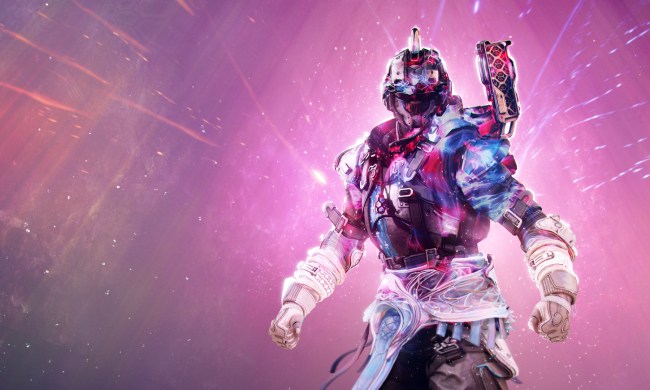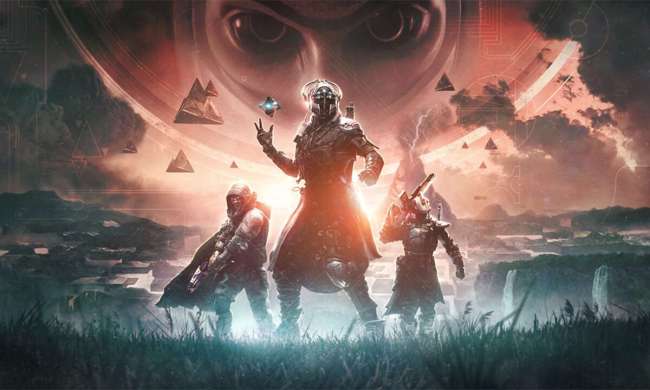I lost my weekend to Halo: Reach.
That’s not what I intended. Yes, I love Reach, but a trip down memory lane isn’t how I planned to spend my time. Star Wars Jedi: Fallen Order and Death Stranding are among the new hotness I’ve barely touched.
Still, Reach loomed. Included with game pass. Ready to play. Eventually, I gave in. I’ll just play the first mission, I told myself, for nostalgia’s sake. It’s old. It’s probably not as good as I remember.
I was wrong. Instead of a casual trip down memory lane, I dove deep into one of the best first-person shooter campaigns ever made. It reminded me how powerfully Bungie flexed its design expertise in its prime, and how the developer has since pushed aside the pursuit of sheer fun in favor of never-ending progression.
On a mission
Destiny’s first year was haunted by a single phrase. “That Wizard came from the moon.” Peter Dinklage’s famously flat voice-acting (later replaced) deflated a reveal that was meant to intrigue you, draw you into Destiny’s bizarrely layered lore. It failed. And not just because of Tyrion.
The Wizard mission, officially titled The Dark Within, roughly follows a formula Bungie perfected in Halo. After battling enemies across the gorgeously rendered Cosmodrone, you’re funneled into intense, dark, cramped corners. Danger looms closer. The fighting is more intense. Eventually, you face the Wizard, a mini-boss,who can fly, has shields, and pummels you with intense bursts of energy.
Eventually, you fight the Wizard. But it’s all wrong.
This same contrast between open areas and tight corridors was used time and time again throughout Halo to control the intensity — and danger — of its missions. Open areas are expansive, fast, epic. Tight corridors are intense, claustrophobic, deadly.
Except … Destiny botched the formula.
The Cosmodrone looks stunning but feels drab. Enemies are too ineffective, too sparse, too far away. Vehicles? The only vehicle you can access is the Sparrow (even it isn’t unlocked your first time through), and it’s unarmed. There’s no pressure to move fast, or slow, aside from your own impatience.
Entering the Lunar Complex where the Wizard lurks is meant to force more careful, considered tactics. It doesn’t. While Halo interiors often offer a few paths forward, the Lunar Complex, like many interiors in Destiny, is simple and too frequently bottle-necked. Darkness doesn’t hide challenging battles but instead a series of lame jump scares delivered by Hive nasties.
Eventually, you fight the Wizard. But it’s all wrong. The cramped room restricts the flying Wizard, who is easily cornered and dispatched. Waves of smaller enemies attempt to distract from that problem but are too weak, and obvious, to halt you for long. Then the Wizard dies, and that’s it. The mission ends, and Dinklage (later, replaced by Nolan North) says the famous line.
Compare this to Winter Contingency, the first (real) mission of Halo: Reach, which serves the identical purpose of pulling the curtain off a big bad. You don’t fire a shot for the first few minutes, but instead take in the game’s scenery as you explore a linear, but open, area. The scenery includes increasingly ominous signs that something is very, very wrong. When the Covenant is revealed, it’s indoors and in close quarters, ensuring a hectic first encounter.
What follows is a series of firefights that rapidly switch between larger open brawls and tense room-by-room fights. It’s not particularly difficult, or long, but it expertly executes a bite-sized rendition of the formula Bungie had perfected since Halo: Combat Evolved.
You’re briefly bombarded by enemy fighters. Friendly aircraft shadow you in the distance. A short Warthog sequence gives you the chance to drive or shoot its big, chunky turret. It all ends in a tense, and potentially lethal, close-quarters skirmish with two Zealots wielding the always-frightening energy sword. The Zealots are smart enough to hide if you try to engage at range but can kill you with one swipe of the sword. You’re forced into a game of cat and mouse where it’s unclear which role you fill.

Both missions follow a common formula and serve the same purpose. But where Destiny stumbles out of the gate, Halo: Reach starts strong. Winter Contingency delivers more variety, more challenge, and better story beats than The Dark Within.
Bungie has tried to improve Destiny’s missions since but, despite the five years that have passed, the problems remain the same. Variety, when it’s attempted, is introduced by stodgy, obvious mechanics. Sometimes you must pick up a ball. Or move a thing. Or wait for a shield to drop.
None of these raise your heart rate, however, because Destiny 2 still relies heavily on linear rooms and predictable waves of foes that, at times, respawn on top of you. Despite that, Destiny’s campaign missions aren’t difficult. The real challenge is reserved for Nightfall Strikes and Raids, both activities a new player can’t access without dumping tens of hours into the game.
It’s all part of Bungie’s plan
Destiny’s failure to reach the heights of Halo: Reach, and that of the Halo franchise overall, isn’t incompetence. Bungie remembers the formula that made Halo: Reach an instant classic and has tried to repeat it in Destiny. The formula falls flat, however, because Destiny is a different franchise, in a different genre, with different goals.
Halo: Reach had a campaign with one goal: Deliver an outstanding single-player experience. Players might revisit it on a higher difficulty, but Bungie knew many wouldn’t. Halo’s famous multiplayer, meanwhile, is a separate and self-contained experience. The campaign, only 10 hours long at a leisurely pace, had to impress players on its own merits.
Destiny only needs to be adequately enjoyable. The real goal is player retention. Bungie needs players to keep coming back again, and again, and again. Moment-to-moment gameplay is window dressing for the progression treadmill that keeps players coming back. That treadmill spans the entire experience, no matter which mode you play. The treadmill is the real game.

I don’t begrudge Destiny its treadmill. I’m ascending through the famously long campaign of Final Fantasy XIV: A Realm Reborn, so I’m down to grind. Give me numbers, with a way to make them go up, and I can keep myself entertained.
Still, my weekend with Halo: Reach was a wonderful, harsh reminder of gaming’s stilted gains over the past decade. Destiny 2 is bigger, louder, and more attractive than anything in the Halo franchise. A new player loading Destiny 2 today faces a pile of #content that can outlast every Halo game played end-to-end.
When I think of fun, however – the sheer moment-to-moment joy of weaving through a complex, varied, story-driven mission – Halo: Reach is a generation ahead of anything Bungie has made since.


